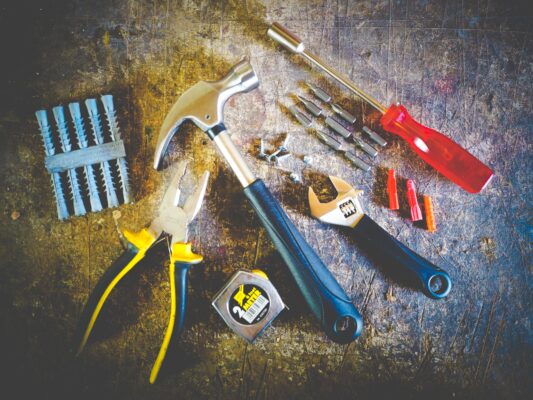Hand tools must be used with the same care as is given to the more expensive machine tools. A reasonable amount of care will keep tools in safe and good working condition. One sign of a good machinist is the excellent condition of his tools.
If this is your first time purchasing them, find a person to help you. Don’t be shy to have question. They would be happy to give you conventional tool sets in one kit. Look for basic tools that are comfortable and can fit your budget. Good and middle price range are said to be your best bet. Cheaper ones don’t usually last long. Of course, there is no need to buy all the tools at ones. Just buy it for special situation. Here are the top tools.
Using hand tools is an essential skill for many DIY projects, home repairs, and woodworking tasks. Here are some general steps to follow when using hand tools:
Proper use of hand tools is essential for achieving accurate and safe results, and preventing damage or injury. Here are some general tips for using hand tools correctly:
How to Use Your Hand Tools More Safely
- Read the instructions: Read the manufacturer’s instructions and safety guidelines before using the tool. This will help you understand how to use the tool properly and safely.
- Choose the right tool: Select the right tool for the job. Make sure the tool is appropriate for the task at hand and can handle the material you are working with.
- Wear appropriate protective gear: Wear appropriate protective gear, such as safety glasses or gloves, to protect yourself from injury.
- Grip the tool correctly: Hold the tool firmly but not too tightly. Use a grip that is comfortable and allows you to control the tool effectively.
- Use the right technique: Use the correct technique for the tool you are using. For example, use a hammer with a straight arm and wrist motion, rather than a flick of the wrist, to avoid injury.
- Keep the work area clean: Keep the work area clean and free of clutter. This will help you avoid accidents and injuries.
- Maintain the tool: Keep your tools clean and well-maintained to ensure they are in good working condition. This includes sharpening blades and keeping tools lubricated.
- Store tools properly: Store your tools in a safe and secure place, away from children and pets. Keep them dry and protected from damage and corrosion.

By following these tips, you can use hand tools properly and safely, and achieve accurate and efficient results.
Examples of hand tools include hammers, screwdrivers, pliers, power drill, wrenches, hand saws, and chisels. Each tool requires different techniques for proper use, It’s important to read and follow the manufacturer’s instructions and safety guidelines for each tool, and wear appropriate protective gear, such as safety glasses or gloves. Always be mindful of safety when using hand tools, and store them properly to prevent damage and corrosion.
Types of Hand Tools
- Hammers: Choose the appropriate hammer for the job and use it to strike nails or other objects. Hold the hammer near the end of the handle and use a swinging motion to apply force. Be careful not to hit your fingers or other body parts with the hammer.
- Screwdrivers: Choose the appropriate screwdriver for the job and use it to tighten or loosen screws. Hold the handle with your dominant hand and apply downward pressure while turning the screwdriver clockwise or counter clockwise.
- Pliers: Choose the appropriate pliers for the job and use them to grip and manipulate objects. Use a firm grip and apply pressure to the handles to hold or bend objects.
- Wrenches: Choose the appropriate wrench for the job and use it to tighten or loosen nuts and bolts. Position the wrench around the nut or bolt and apply force to turn it clockwise or counter clockwise.
- Hand saws: Choose the appropriate hand saw for the job and use it to cut wood or other materials. Use a firm grip and apply even pressure to make straight, smooth cuts.
- Chisels: Choose the appropriate chisel for the job and use it to carve or shape wood or other materials. Use a firm grip and apply even pressure to make precise cuts.
- A power drill: also known as an electric drill, is a handheld power tool that is used to drill holes or drive screws and other fasteners into various materials, such as wood, metal, or plastic. It is an essential tool for DIY enthusiasts, woodworkers, and construction professionals. Power drills are available in corded and cordless versions.

